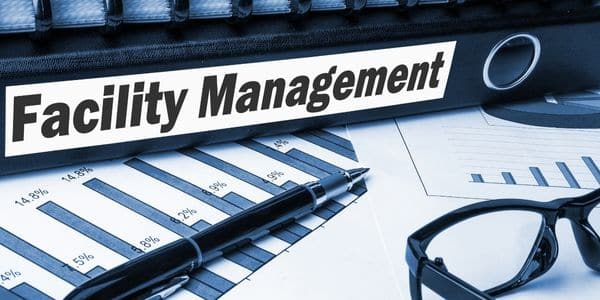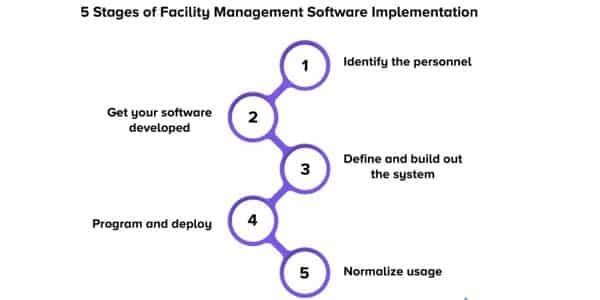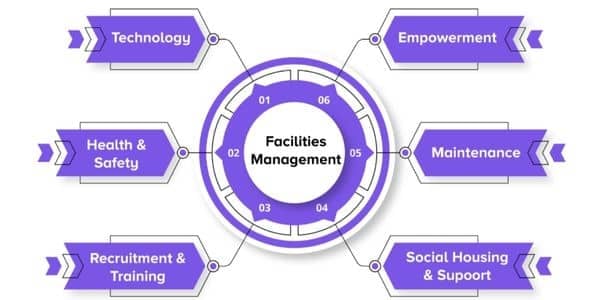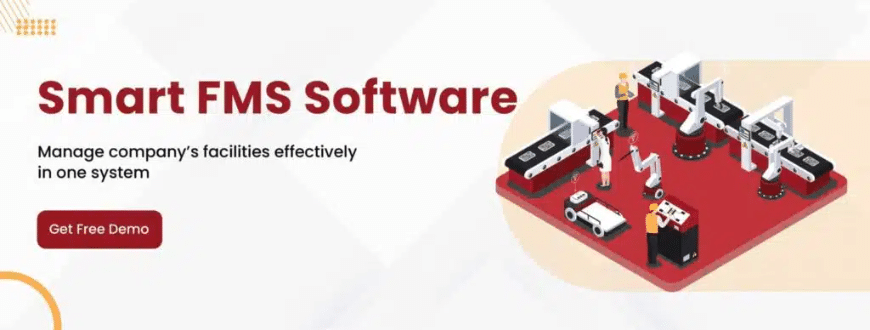Organizations concentrate on creating a solid platform for long-term success in the increasing complexity workplace of today. It includes the supporting infrastructure for the processes and systems that control it and the physical infrastructure. Whether you run a project, educational institution, or business office, you will undoubtedly confront several challenges with upkeep and organization. The organization’s core is software for Facility Management System, which centralizes operations to channel maximum infrastructure use and efficiency. Facility managers must know the many platforms to integrate, organize, and effectively manage them.
Many software for facility management hints and guidelines aid in streamlining and accelerating the entire management procedure. This article will explain the five steps of FMS installation for facility management and when to utilize them. But first, let’s shed some light on facility management principles, including its many types, challenges, and more. You can use HashMicro’s Software for Facility Management to handle contracts, scheduling, and billing while streamlining building maintenance procedures. Download the price scheme to learn all the advantages Hash Facility Management may provide your company!
Table of Content:
Table of Content
Facility Management in Industry 4.0
Software for Facility Management (FM) seeks to deliver relevant, cost-effective services to support and optimize key company processes. A wide variety of services are now included in facilities management. In Industry 4.0, FM evolves due to new technologies that may boost the capabilities of structure-management jobs. This research considers Digital Twin (DT), Internet of Things (IoT), Cyber-Physical Systems (CPS), and their industrial specializations, Industrial Internet of Things (IIoT) and Cyber-Physical Production System (CPPS), to improve FM. Adopting emerging technologies like IoT, IIoT, CPS, and CPPS has led to recent advancements in facility management techniques.
The IoT enables new, broad, adaptable, intelligent, and efficient diverse digital applications for facility management. Huge and long-term cost benefits are made possible through more innovative facility management, leaner operations, and reliable data analysis. Modernization is in progress, typified by Big Data, Building Information Modeling (BIM), Computer Aided Facility Management (CAFM), and Ambient Assisted Living (AAL) – technologies that reduce expenses, enhance user quality of life, and increase security. This breakthrough has long-term promise and will soon transform the industry and our daily lives.
FMS Challenges

Most facility managers have hurdles in maintaining office buildings, equipment, and infrastructure in excellent repair. But sometimes, things become rather tricky, and numerous problems can appear suddenly. Several significant issues with facilities management are covered in this section.
Lack of facility information availability
Old or paper-based procedures create inadequate or no access to reliable facility information, causing more effort and slower operations. Lack of information prohibits field teams from getting facility data and leadership teams from viewing processes and other vital information. This may lead to more readily avoidable errors, poor judgments, and increased liability risk.
Inefficient facility compliance
Many businesses need help with the issue of challenging compliance activities that take an excessive amount of time to complete. The capacity of companies to succeed in other areas is sometimes limited by manual reporting and compliance processes. Such businesses must also have defined policies and procedures for identifying and fixing errors. This may lead to a less effective workforce and raise the possibility of mistakes and omissions.
Creating a sustainable workspace
Supply chain operations may harm the environment, and their consequences on climate change are a hot topic. There have been complaints that transporting goods by land, sea, and air releases toxic fumes into the atmosphere. However, using environmentally friendly procedures while dumping the current ones might result in significant losses for the business.
Hybrid workspace utilization
According to a CBRE study, the typical employee will spend 24% less time at work even if office space demand is up after the pandemic. As a consequence, many businesses, including more than 80% of prominent corporations, are keeping or implementing a mixed workplace model. Changing to a hybrid work paradigm without sufficient planning and tools might cause a firm to lose money owing to poor office space efficiency.
Constant damage control
Facility managers must always be productive and at the top of their game. If you operate a facility, you should have a solid strategy for damage management and prevention. Without it, you risk dealing with various damage control tasks every day. As a facilities manager, you will get urgent calls where you must decide what to do and how to prioritize duties quickly.
Proper energy management
Buildings use the most energy for your company and have the most effect on the current environment. Facility managers search for the finest software for facility management available today to assist them in managing various resources.
Types of FMS

You may have encountered many difficult-to-understand terms when looking at business software for facility management system options. Various kinds of software for facility management perform distinct functions at different levels for businesses. Below are the types of software for facility management available today.
Integrated workplace management system
The facility management toolkit is an integrated workplace management system or IWMS. You can manage anything using IWMS, including the generation of floor plans and maintenance planning and management. IWMS adoption reduces energy usage by 10%, improves workspace by 40%, and cuts facility maintenance expenses by 14%.
Computer-aided facility management
CAFM helps managers to plan space, finances, preventive maintenance, and customer service to meet company requirements. It supports all tasks related to managing space and the workplace in terms of planning, carrying out, and monitoring.
Computerized maintenance management system
Companies that depend on infrastructural facilities often adopt computerized maintenance management systems or CMMS. It is computer software that efficiently executes maintenance tasks and centralizes data about maintenance. Asset registry, labor and resource management, work order administration, reporting, analysis, and auditing are CMMS functions.
Enterprise asset management
The software, tools, and services needed to maintain and manage operating equipment are collectively called “EAM” or “enterprise asset management“. The EAM or enterprise asset management aims to maximize asset quality and utilization while boosting output and lowering operating expenses.
It includes EHS activities, supply chain management, job management, and asset maintenance. A bespoke software developer can help you design, create, and implement software for facility management with real-time business features.
FMS Benefits
The diverse demands of facilities managers are considered while designing software for facility management. The capabilities of genuine facilities management software often astound users of other products. They have every characteristic required to:
- Maximizing space
- Boost performance
- Gather and present historical data
- Run hypothetical situations
- Make sure records are accessible
- Increase record accuracy
- Gain understanding without looking through tons of documents
5 Stages of Implementation

Implementing software for facility management is not a one-day process; you must investigate your organization’s needs, such as what operations you need to execute and how it may improve performance. These are the five steps that each business takes to adopt software for facility management, according to the chart below:
Phase I: Identify stakeholders
Who will communicate with your building management system? Most likely, everyone has the solution; all you need to do is find out how. For instance:
- Lower-level personnel submits fix-it requests through a gateway for the computer maintenance management system (CMMS).
- Department managers update the personnel directory.
- Executives use dashboard data to get financial and real estate information.
- Facility managers gather and evaluate data to enhance the working environment.
- Technologists integrate IoT devices for the workplace into the system.
It is all about the endpoints, integrations, and interactions that impact your facilities’ daily operations. Determine what is needed and why. You successfully evaluate the demand for certain features, advantages, and functions to make the following step easier.
Phase II: Software selection
What is the point if facilities management software doesn’t provide the functions your company wants? Apply the knowledge you gained from the earlier stage to the software selection process. How to choose software for facility management is as follows:
- Make a thorough list that includes features and pricing ranges.
- Remove outliers (too expensive, not enough features, and others.)
- Reduce the field to three to five candidates, then demote each.
- Review the benefits and drawbacks of each choice you make.
- Select software that provides the ideal balance of features, advantages, and cost.
Because it determines how your facility management system will be implemented, this step is likely the most crucial. Think about every aspect of the software, including the user interface, integration possibilities, and the company’s history of software development. Never forget that this program is the entrance to everything related to facilities management. Does it satisfy your requirements and expectations?
Phase III: Define and build out the system
Workflow maps should be created using the appropriate tools. How will you develop a system by incorporating this new software for facility management into your daily operations? Think about the following:
- Tasks and procedures you may automate using the platform
- You may change data collecting and reporting inside the program
- Modes of cooperation and communication built into the program
- technology issues that must be considered for good integration
- outdated or manual platform procedures that need to be redone
Consider merging Phase I’s needs, wants, and expectations into software to build a natural facility management system. There will be some difficulties—a few square pegs in round holes. Spend time designing each distinct aspect of the system to ensure that it functions properly the first time. As the system becomes a staple, the fewer problems there will be, the better.
Phase IV: Program and deploy
Make sure a facilities management system is set up appropriately before deploying it. System disruption and employee annoyance might result from a premature launch. Following are some things to think about just before a deployment:
- Test them all to ensure that all workflows and procedures function as intended.
- Set up user credentials and tiers of permissions for stakeholders and users.
- Determine cross-departmental factors like portals and processes.
- Verify application integrations and accessibility.
- To fix any vulnerabilities, do a security audit and systems check.
This phase adds the final touches to your facilities management system. Remember that each expanding business will encounter fresh difficulties that need a flexible facilities management system. What you construct today may not be what you will use in a couple of years, but it’s meant to get you there.
Phase V: Normalize usage
Establish a facilities management system and use it as the foundation for all decisions. It should be the cornerstone of facility operations and the default decision-making mechanism. Utilizing such a system is the only way to recover your investment and enjoy its advantages. Implementing facilities management software will be simpler than you think if you follow each of these five steps.
It is a systematic procedure that assures you satisfy facility expectations by identifying them, then picking software and managing a system. Is it a difficult task? Yes, but there is a road map for it. A facilities management system that aids in your company’s continued growth will result from being thorough in each aspect.
Also read: How Facilities Management Software Benefits Your Business in Singapore
When to Use FMS
Software for facility management may enhance efficiency if your organization maintains assets, work orders, and requests through email and spreadsheets. Planning for business continuity might also benefit from using software for facility management. If your facilities manager departs, the following individual may take over thanks to comprehensive project records and approved work orders. When you maintain assets and work orders via spreadsheets and email, it is hard to know what to do following a staff change.
The most excellent method to increase the influence of facility managers at your company is using software for facility management. User portals provide direct contact between facility managers and other users of your company, guaranteeing timely work orders and requests. Automate regular operations like cleaning and maintenance, manage physical assets more accurately, and retain safe records of payments, bills, and budgets. This is crucial for an easier transition back to work and the general optimization of operations.
Also read: The Reason You Should Invest in Facility Management Software
Conclusion
Facility management system uses new technologies daily to produce sustainable, sophisticated solutions that fulfill business objectives and achieve results. Software for facility management systems aids in finding more effective methods to enhance maintenance and operations processes. Your facility becomes more responsive and less reactive when best practices are in use.
Appinventiv, a fast-growing software provider, can design, create, and implement bespoke facilities management software to optimize your business operations. HashMicro’s Facility Management Software, integrated with the finest ERP Software, simplifies and digitizes all activities. Monitoring and reporting on all facilities while keeping to business budgets save money. Contact us for a free demo of our facilities management software and to discuss your company’s needs.




































